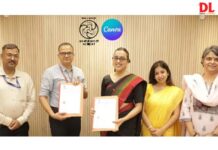
The Ministry of Education (MoE) has issued a clarion call to all States and Union Territories to achieve ‘full literacy’ by the year 2030. In a letter addressed to State governments, School Education Secretary Sanjay Kumar outlined the renewed push for adult literacy under the New India Literacy Programme (NILP), a five-year initiative (2022-2027) targeting the onboarding of one crore learners annually across the nation.
Redefining Literacy and Full Literacy
In his communication, Secretary Kumar provided a detailed definition of ‘literacy’ and what it means to achieve ‘full literacy’ in India. He emphasised that literacy is not merely the ability to read and write but also encompasses numeracy and critical life skills such as digital and financial literacy. The goal of ‘full literacy’ is to be achieved when a State or Union Territory attains a 95% literacy rate, which will be considered equivalent to 100% literacy under the NILP guidelines.
The MoE’s directive also clarified that under the NILP, individuals previously classified as non-literate could be considered literate upon passing the Foundational Literacy and Numeracy Assessment Test (FLNAT). In the latest FLNAT conducted in March 2024, out of 34,62,289 participants, 29,52,385 (85.27%) were certified as literate. This marks a slight decline from the previous year, where pass percentages ranged from 89.64% to 91.27%.
Budget Allocation and Utilization
The NILP has been allocated ₹160 crore for the fiscal year 2024-25, reflecting the government’s commitment to enhancing adult literacy. However, the actual utilisation of funds in previous years reveals a mixed picture. In 2022-23, only ₹76.41 crore of the allocated ₹160 crore was spent. In 2023-24, the budget was initially raised to ₹157 crore but was later revised downward to ₹100 crore.
The Literacy Challenge in India
India continues to grapple with a significant literacy challenge, particularly among adults. According to Census 2011, 25.76 crore individuals in the 15 years and above age group remain non-literate, comprising 9.08 crore males and 16.68 crore females. Despite the progress made under the Saakshar Bharat programme, which certified 7.64 crore individuals as literate between 2009-2018, an estimated 18.12 crore adults in India are still non-literate.
Also Read: VCs, Staff Appointments in Telangana Universities to Begin Soon
The Road Ahead
The letter from the School Education Secretary underscores the disadvantages faced by non-literate individuals, including challenges in financial transactions, job applications, media comprehension, technology use, and understanding of rights. The MoE’s ULLAS initiative, under the NILP, is seen as a critical tool in addressing these gaps and pushing India towards achieving full literacy by 2030.
“I urge all States and Union Territories to strive for Bharat reaching full literacy by 2030 with the ULLAS (NILP) initiative,” Mr Kumar wrote, emphasising the importance of collective effort in this nationwide mission.
This renewed focus on adult literacy is expected to play a crucial role in India’s broader development agenda, empowering millions of citizens to participate more fully in the country’s economic and social life.



















